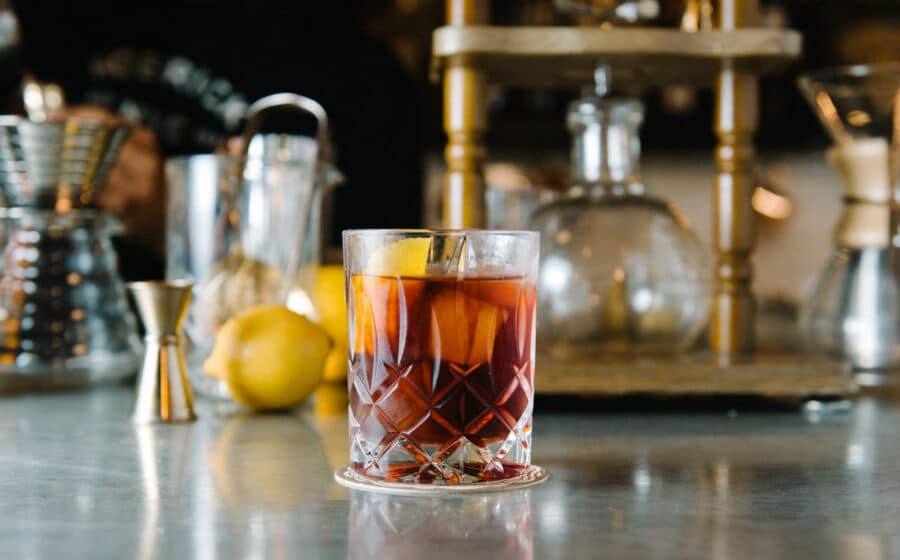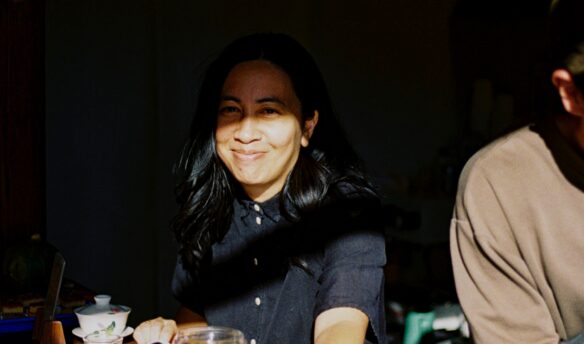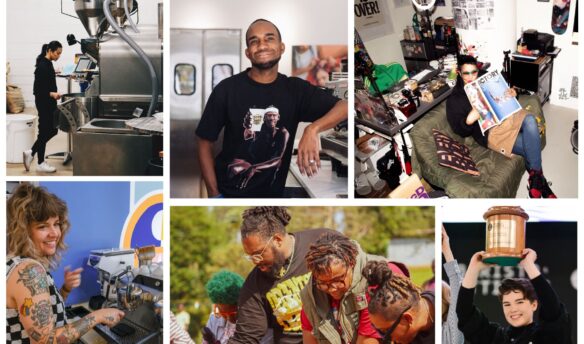In the Meatpacking District of New York City, there’s a cafe serving drinks all day and all night.
The busy store sits among the cobblestone streets on Manhattan’s west side, with exposed brick walls and tall windows that fill the interior with natural light from dawn to dusk. As the sun sets and evening arrives, the space transforms: pastries are cleared from the bar, the condiment station disappears from sight, and the ambiance shifts as dimmed lights and flickering candles grace the tables. The music becomes more lively and upbeat, setting the stage for the night ahead.
Unlike typical cafes, where customers pour in from 8:00 to 10:00 AM, Kobrick Coffee Co. comes to life around lunchtime and remains a magnet for customers until 2:00 AM. Here, the baristas are cross-trained as mixologists, and their creative fusion of craft coffee and cocktails means you can order an exciting drink any time of the day.
An Enduring Tradition
Founded in 1920 by Samuel Kobrick in Manhattan, Kobrick Coffee Co. is one of the oldest coffee roasters in the New York metropolitan area and has seen four generations of Kobricks take the reins. In 2015, siblings Scott and Nikole Kobrick took the lead in launching the coffee company’s flagship retail space.


Initially operating in a tiny location with a coffee and food program, the Kobrick siblings quickly realized the importance of maximizing every inch of space available. “Because we’re in the Meatpacking District—obviously a very high rent location—we saw this opportunity to double the space up,” says Scott Kobrick.
They envisioned a space modeled after European coffee houses that served as the foundation of cafe culture. Rather than open a space for people to work on their laptops, their coffee bar would foster a social atmosphere where conversations flowed over drinks. This vision was further fueled by recognizing the parallels between the art of coffee preparation and crafting cocktails, a revelation that emerged as the team began experimenting at their roasting facility.
“Over the years, I would get requests to help some of my wholesale customers with a beverage on their menu,” says Kobrick. “We realized that coffee as an ingredient could be used far beyond an espresso martini—it could be utilized as a component in many different types of cocktails and paired with other flavor profiles.”
Yet the Kobricks’ intention wasn’t to open a space that’d serve coffee in the morning and cocktails at night simply for utilitarian reasons (as Kobrick mentioned, rent is expensive in New York, and some cafes cleverly maximize their space by offering other services or retail goods); instead, it was about creating a seamless experience that effortlessly blended coffee and cocktails together but still provided patrons a unique experience whether they came in at 7:00 in the morning or 7:00 at night.
One way Kobrick’s does this is through decor: exposed brick and dark wooden panels provide the backdrop for marble-top tables decorated with freshly cut flowers. Above the counter, exposed light bulbs emit a warm glow, and family heirlooms take their place atop shelves behind the bar. The seating options range from cushioned benches to chairs, all sharing antique-style pedestal legs that complement the tables. Vintage photographs line the walls, while neon word art introduces a modern touch to the space.
By day, customers could order coffee listed on vintage mirrored menu boards behind the counter. These boards glide along tracks, discreetly covering the liquor shelves in the morning hours. With coffee and cocktail service overlapping, a subtle shift occurs as dusk descends—bartenders slide the menu boards back to unveil an array of spirits while cleverly concealing the coffee shelves.
The Fusion of Two Disciplines
Bar equipment like pitcher rinsers and drink rails have become commonplace in coffee preparation. However, Brian Averbuch, Kobrick’s director of retail operations, sees the similarities between craft coffee and craft cocktails go beyond equipment. “It’s a mentality and precision with your craft—measuring each shot of espresso and making sure the extraction time is correct is similar to a bartender measuring each ingredient for a craft cocktail,” he says.
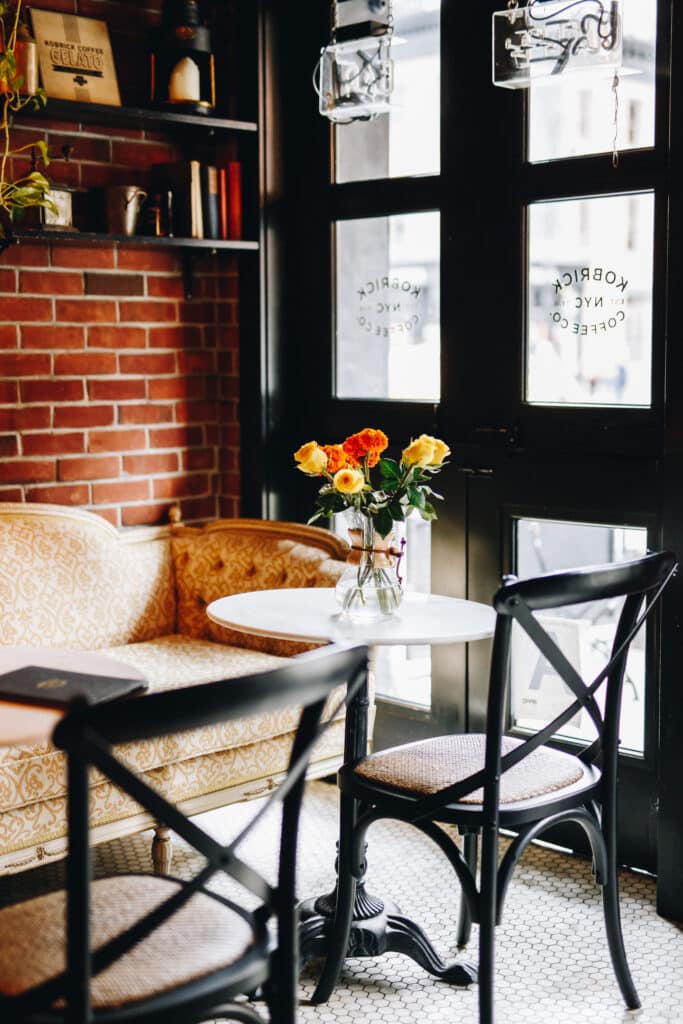
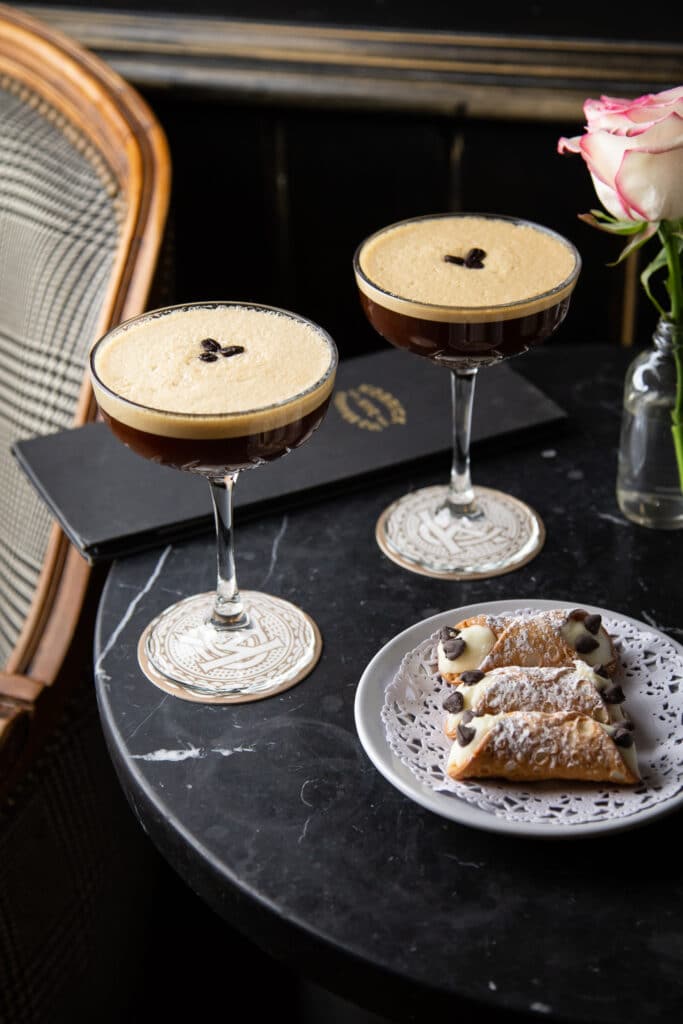
“There are a lot of synergies between the two crafts of being a barista and being a bartender. We wanted to incorporate those things into our program, not only to make it sort of easier for us operationally, but also to be able to add an element and uniqueness to our two different menus,” Averbuch adds. Kobrick’s mixology team, where baristas double as bartenders, created a menu of coffee drinks and mocktails. Drinks integrate bartending techniques with coffee brewing methods, like the Koco Freddo, a beverage featuring shaken cold brew, coconut oil, and egg white.
Among the most sought-after cocktails is the Kyoto Negroni, which harnesses a slow-drip cold brew technique to infuse a Negroni cocktail. The coffee bar’s take on the Old Fashioned—the Old Slip—is made by infusing bourbon with coffee through an AeroPress.
Not every drink needs coffee to be inspired by coffee. Another crowd-pleaser at Kobrick Coffee Co. is the Chemex Bloody Mary. The drink combines fresh ingredients such as horseradish, habanero, peppers, salt, pepper, and Worcestershire sauce—all typical components in a classic Bloody Mary. “We put that in the top of a Chemex with a filter. Instead of pouring coffee over like you normally would, or pouring hot water over coffee, we pour vodka over the fresh ingredients, and it drips through the Chemex,” explains Averbuch. What comes out on the other side is a flavorful, fresh-infused vodka that mixologists combine with tomato juice and fresh lemon juice.
Traditionally, baristas and mixologists have been seen as performing two different roles, but Averbuch says the principles that underlie coffee preparation also apply to mixology. “Baristas understand the scientific elements of how extraction works, the different methods of extraction, steeping time, and the amount of product you’re using—whether it’s coffee or a syrup,” he says.
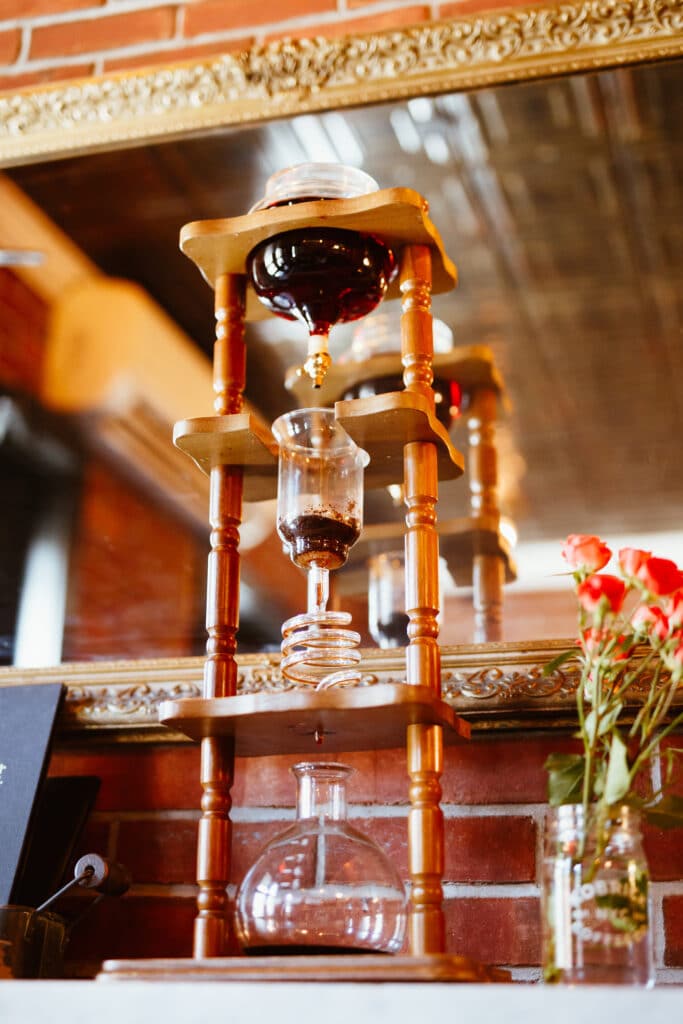
At Kobrick, looking for people that want to expand their skill set is an important part of their interviewing and hiring process. “We’ve found that a lot of baristas are interested in learning bartending techniques. Overall, because we make craft coffee and craft cocktails, our staff is willing to put in the work necessary to learn those skills—it keeps things fun and interesting behind the bar where you’re constantly learning new things,” Averbuch says.
As Kobrick gears up for expansion with the debut of its new Miami location in Fall 2023, they’re dedicated to enhancing the dine-in experience of coffee. This entails table service, where menu items are served in ceramic, inviting guests to enjoy a more immersive experience with the menu.
By day, it’s a bright and bustling coffee bar. Come nightfall, Kobrick transitions into the perfect backdrop for intimate conversations or an evening date. It’s in this harmonious fusion of day and night where Kobrick truly shines, creating an experience where the worlds of coffee and cocktails come together to meld into something exceptional.



